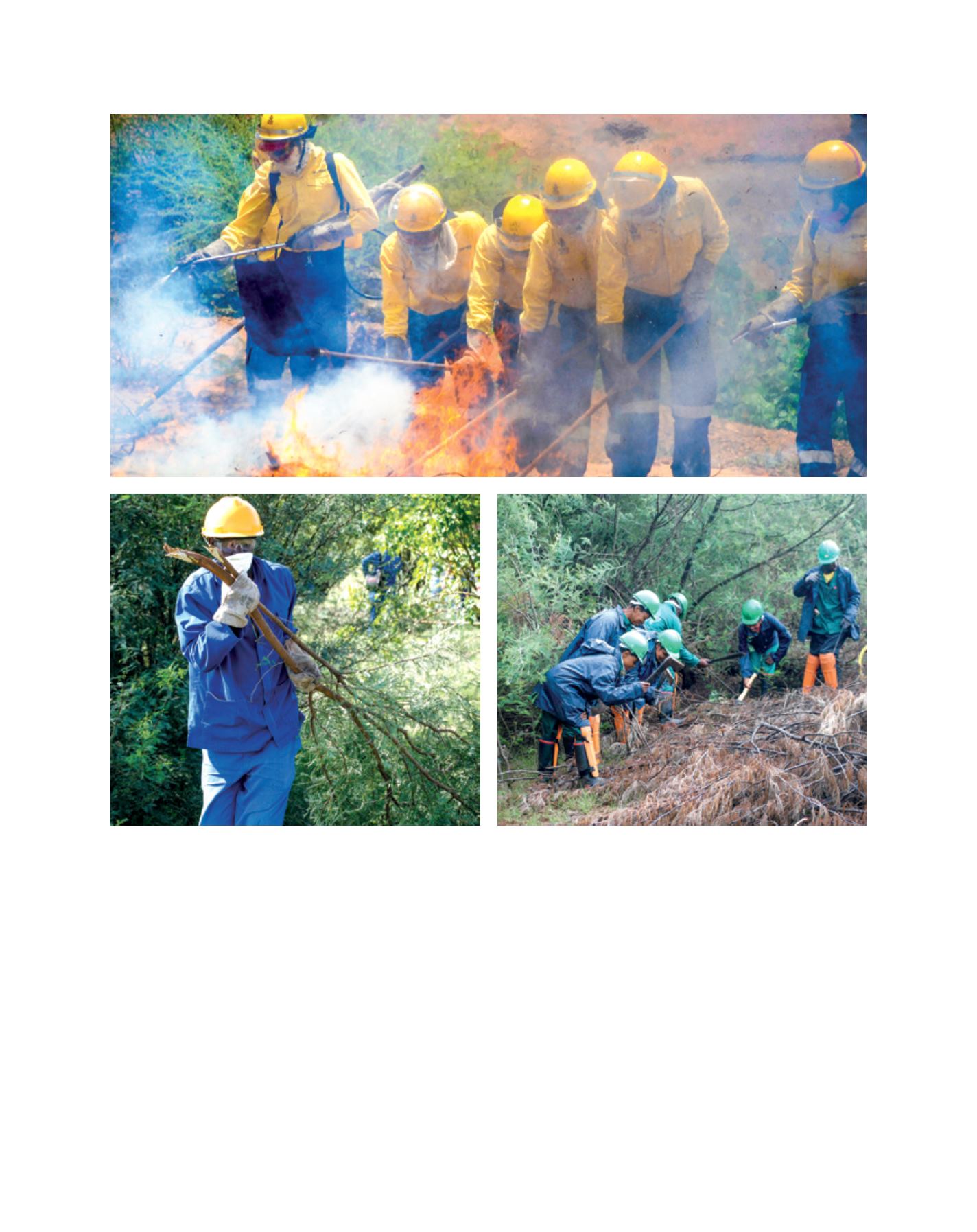

[
] 52
African National Biodiversity Institute (SANBI), was formally
established. During the same period there were a number of
devastating wildfires across the fire-prone biomes of South
Africa. Often the most devastating ones were associated with
high fuel loads, the result of dense stands of invasive alien
plants which caused very hot fires that not only threatened
infrastructure but had devastating impacts on topsoils and
biodiversity. In September 2004 Working on Fire (WoF) was
established, again as a sibling programme of WfW.
The Subtropical Thicket Restoration Programme — the
forerunner of what would become Working for Ecosystems
— was also established in 2004 to develop a scientific plat-
form for catalysing public and private sector investment in
the restoration of more than 1 million hectares of degraded
subtropical thicket in the Eastern Cape of South Africa. After
some years the project was expanded to the grasslands and
savannah areas of the Maloti-Drakensberg range in the north-
ern parts of the Eastern Cape, KwaZulu-Natal and the other
northern provinces, more specifically Limpopo.
With the establishment of Working for Ecosystems there
was now an integrated programme in place for the imple-
mentation of restoration and maintenance of ecological
infrastructure and the delivery of ecosystem services. It
completed the family of programmes that could address
challenges related to water security, climate adaptation and
mitigation, improved productive potential of land, natural
disaster risk management and most importantly, restoration
of biodiversity.
Images: Christo Marais
Images: Christo Marais
Top: WoF has more than 30 per cent women in its employment and over 90 per cent of the fire fighters are younger than 35
Bottom: To date some 2.8 million hectares of invasive alien plants have been treated. Invasive alien plants cover around 20 million hectares of South Africa
L
iving
L
and
















